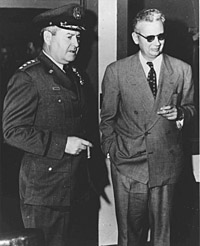Collins Radio Company “Collins Signals” from the 1930’s
During the 1930’s, the Collins Radio Company published a newsletter for its customers to supplement their general cataloge. The first issue was published in February of 1933:
“…This is the first issue of a little bulletin which the Collins Radio Company will publish periodically and mail to all of its friends who have requested the Collins general catalogue. The COLLINS SIGNAL will serve principally as a supplement to the general catalogue and will keep it up to date. The format is such that it can be inserted in the binder furnished with the catalogue. In this way it will be possible to describe the equipment a little more fully and discuss in detail certain subjects which prove to be of general interest. However, we also propose to include newsy bits which will acquaint you with the radio activities of many of your friends and our friends. May we suggest that you write to us whenever something unusual or interesting occurs within the sphere of your activity. We will welcome suggestions as to what additional material should be included…”
The CCA will continue to digitize and publish Collins Radio Company “Collins Signal” newsletters as they become available.
Viewing and printing of CCA Portable Document Format (.pdf) files requires that you obtain and install Acrobat Reader from Adobe, Inc. Acrobat Reader can be downloaded for FREE via Adobe’s web site. Once you’ve downloaded and installed Acrobat Reader, you can click on any of the CCA’s .pdf file links below to view, save or print the document.
Acrobat Reader can be downloaded for FREE via Adobe’s web site. Once you’ve downloaded and installed Acrobat Reader, you can click on any of the CCA’s .pdf file links below to view, save or print the document.
The following Collins Radio Company “Collins Signal” newsletters were digitized by the Collins Collectors Association with permission of Rockwell Collins. These files are the property of the CCA and can be downloaded for private use only. Any copying, redistribution, or publication without written permission of the CCA and Rockwell Collins is prohibited. These files are digitally protected.
| Collins Signal, February, 1933 | (1.1mb) |
| Collins Signal, March, 1933 | (1.1mb) |
| Collins Signal, August, 1933 | (2.3mb) |
| Collins Signal, January, 1934 | (8.8mb) |
| Collins Signal, July, 1934 | (3.5mb) |
| Collins Signal, September, 1935 | (2.5mb) |
| Collins Signal, December, 1935 | (4.4mb) |
Collins Radio Company, with more than 30 years’ experience in research, development and manufacture of distinctive amateur equipment, has dedicated itself to the objective of product excellence.
Whatever the field – amateur radio, avionics, commercial broadcasting, space electronics, communication, computation or control – Collins’ uncompromising standards of excellence begin with product development and continue through every step of manufacture, quality control and test.
Collins’ amateur radio equipment has been the standard used by DXpeditions around the world in environmental extremes seldom encountered by the average ham.
Collins’ single sideband products have long been used by the U.S. military team. During the early years of single side- band communication, the size and weight of the equipment limited its use principally to point-to-point circuits between fixed stations.
Continued development following World War II has resulted in a wide variety of high performance equipment for airborne, transportable, vehicular and shipboard, as well as fixed station, use.
The Strategic Air Command commanders’ net, the Strategic Air Command aircraft control net and the Navy Tactical Data System are but a few of the major installations using Collins’ single sideband. The Universal Radio Group, latest generation ofCollins’ SSB equipment, is a highly flexible and sophisticated HFcommunication design used by the U.S. Armed Forces, NATO and space centers.
Collins’ research and development, plus the Company’s never-ending emphasis on quality control, assure each Collins’ amateur equipment owner that he has the most advanced and most thoroughly tested equipment available and that it will retain its value through the years.
- ARCHIVES HOME
- CCA COLLINS TECHNICAL ARCHIVES
- Amateur Service Agency Bulletins
- Collins 1959 and 1964 General Catalog
- Collins Radio Company "Collins Signals" from the 1930's
- Collins Radio Equipment Manuals
- Collins Radio Service Bulletins and Information Letters
- Fundamentals of Single Side Band
- Rod Blocksome's Collins Surveys
- CCA COLLINS HISTORICAL ARCHIVES
- Company History
- The Equipment of Collins Radio
- The People of Collins Radio

